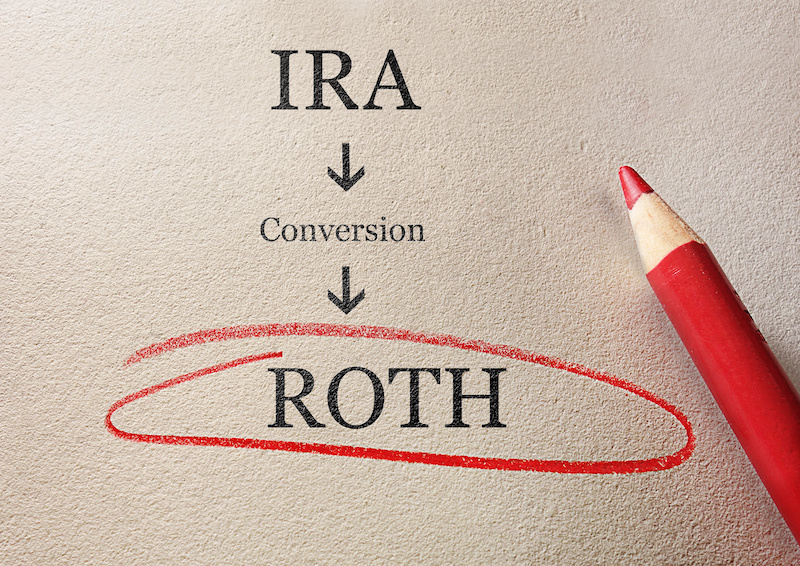
A Roth IRA is undoubtedly one of the best retirement accounts available, as it offers a wide array of benefits, including tax-free income and the ability to leave money to heirs and beneficiaries tax-free. The Roth’s tax-free attributes also allow for considerable flexibility when it is finally time for you to distribute your income from your retirement accounts.
The benefits from a Roth IRA don’t have to be exclusive to current Roth owners, however, as those with 401(k) or traditional IRAs are able to convert their plan to a Roth and begin to take advantage of its tax-friendly benefits.
The benefits of a Roth IRA include the following:
- You can deposit after-tax money and withdraw your funds tax-free upon retirement (after age 59 1/2).
- You can pass down a Roth to your heirs tax-free.
- Unlike a traditional IRA, there are no required minimum distributions (RMDs).
- You can withdraw contributions (not earnings) at any time with no penalty.
Converting from a 401(k) or traditional IRA to a Roth IRA is a straightforward process. Follow these basic steps to convert your retirement funds to a Roth:
- Open your Roth account at a bank or other financial institution. If you already have a Roth account, you can use that account.
- Contact the administrators of both financial institutions (the one you opened the new Roth account with and the institution from which you are converting the funds from), and inquire about what steps you need to take in order to make the conversion.
- Fill out and submit whatever required paperwork there is to initiate the transfer.
Withdraw rules for Roth conversion work differently. Any traditional IRA or 401(k) converted will be taxed and penalized if any withdrawals are taken within five years of the conversion, or if any are taken before you turn 59 1/2. For any withdrawals taken from a converted Roth after you turn 59 1/2, the five-year rule does not apply.
Thoughtful investors often space out their Roth conversions over many years as opposed to converting the full amount all at once to avoid large tax hits. In doing this, they avoid jumping into a higher tax bracket and paying the higher tax rate that comes with it.
Because careful planning and consideration is needed to ensure you’re executing a sound Roth conversion strategy, it is important to consult with a financial and tax professional before making such moves. They can help map out a formal plan for your Roth conversion to keep your taxes lower now and in the future.


